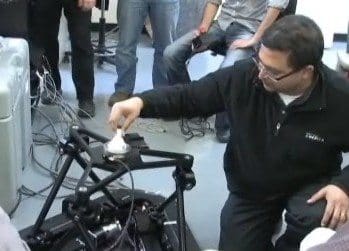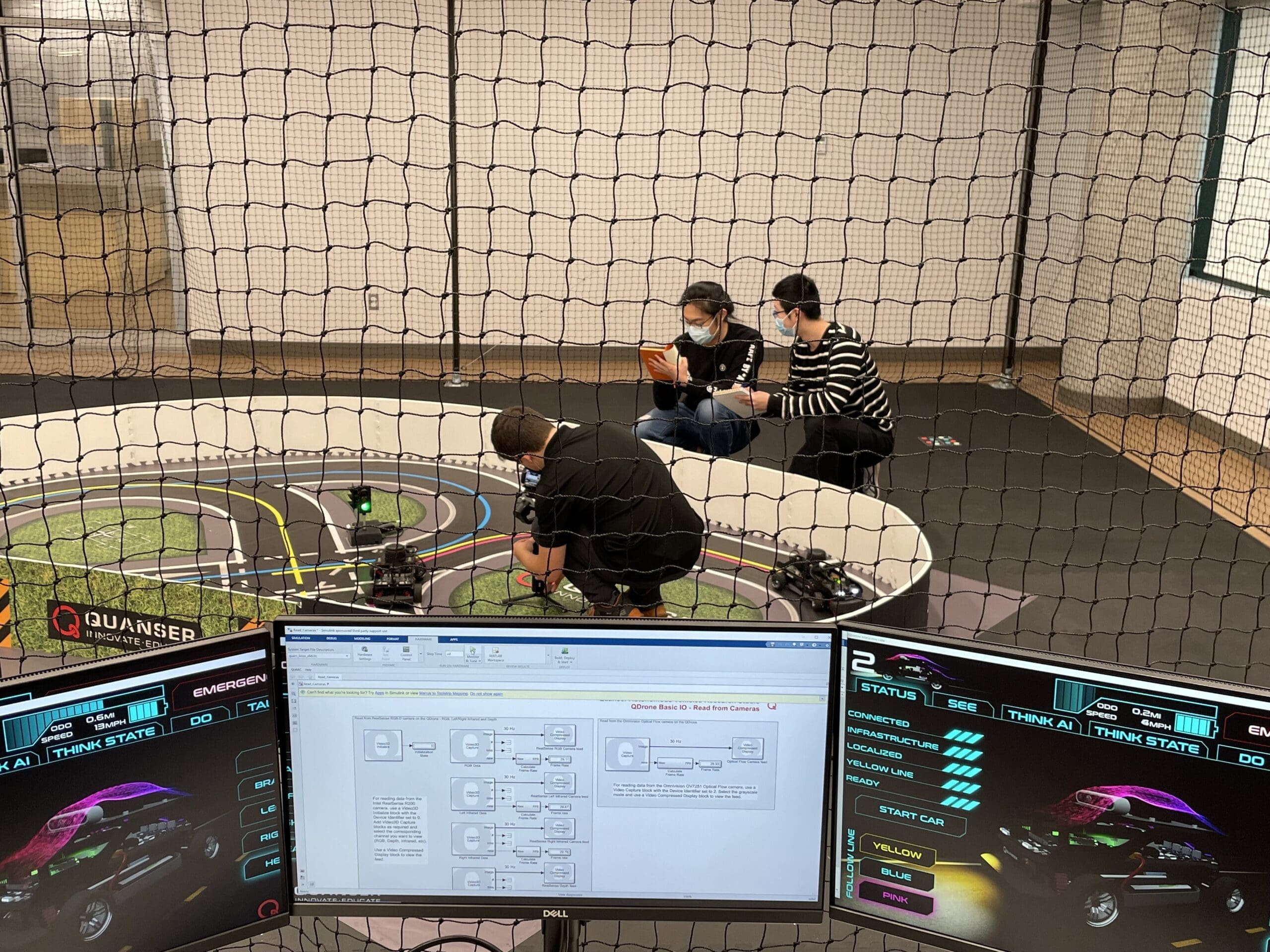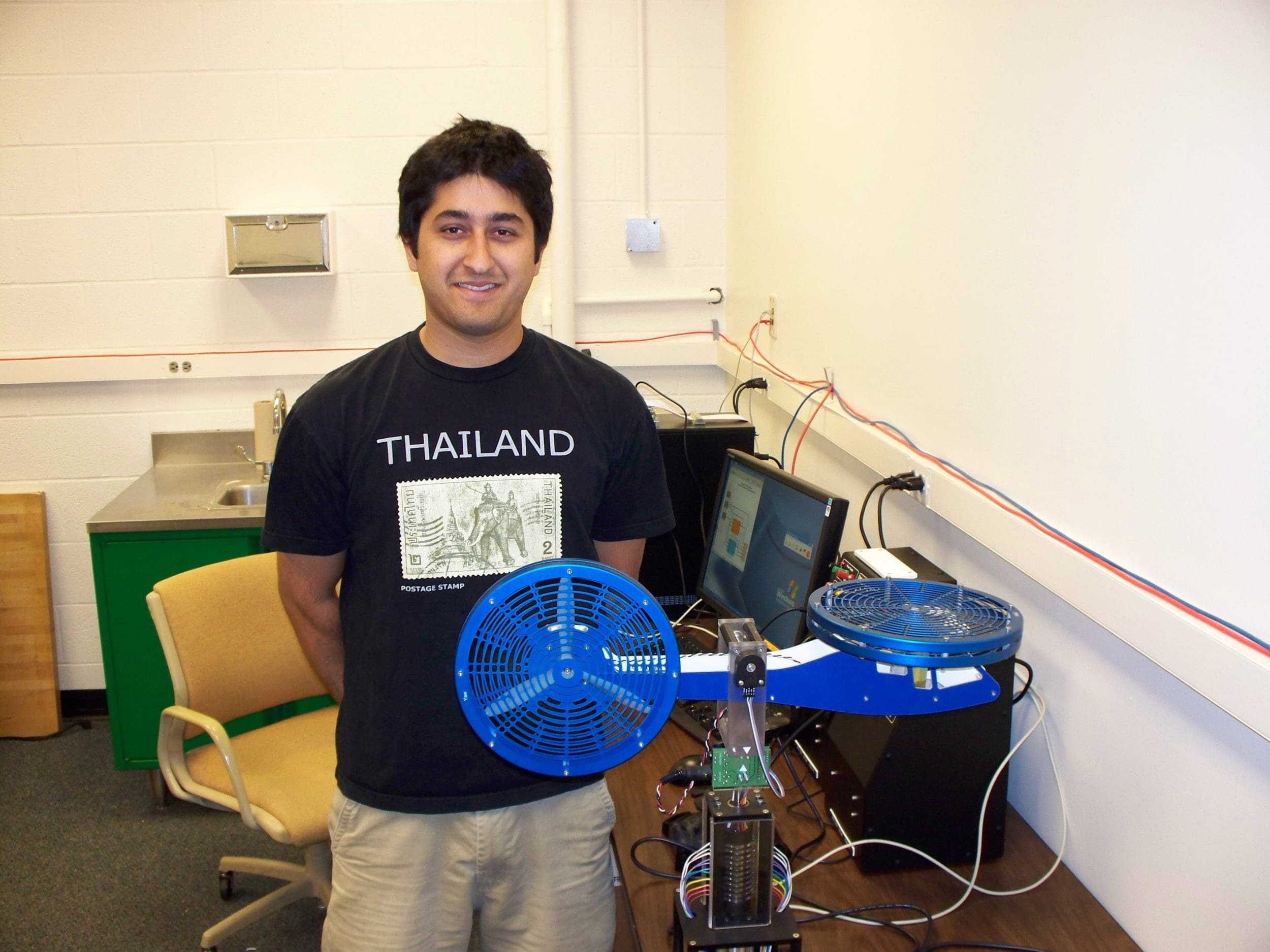
Professor Venkat Krovi, an Associate Professor at the Department of Mechanical and Aerospace Engineering of State University of New York (SUNY) at Buffalo came to Quanser looking for a means to quickly physically prototype a yet non-existent 6 DOF motion platform for his latest experimental research. In his own words, to “enhance human-manipulation capabilities, such as dexterity, strength, and skill with articulated mechanical systems”. Applications of his research range widely from distributed payload manipulation by robot teams to remote teleoperation with force-scaled feedback and haptically-enhanced virtual surgical and driving simulators.
Challenge
Building a motion research device faster
Professor Venkat Krovi, an Associate Professor at the Department of Mechanical and Aerospace Engineering of State University of New York at Buffalo (SUNY), came to Quanser looking for a means to quickly physically prototype a yet non-existent 6 DOF motion platform for his latest experimental research. In his work Professor Krovi, ultimately aims, in his own words, to “enhance human-manipulation capabilities, such as dexterity, strength, and skill with articulated mechanical systems”. Applications of his research range widely from distributed payload manipulation by robot-teams to remote-teleoperation with force-scaled-feedback and haptically-enhanced virtual surgical and driving simulators.
Professor Krovi had worked with different engineering firms in the past, but “I was really impressed by the quality of Quanser’s engineering,” he notes. As one of the first users of their brand new High Definition Haptic Device HD² he had interacted with Quanser’s engineers and has even had some influence on its final design. This past experience with Quanser’s technical capabilities naturally led to this collaboration to physically prototype the 6 DOF motion platform.
Solution
The Hexapod, featuring 6 DOF parallel kinematics
The 6 DOF motion platform Quanser developed is known as the Hexapod, and is a part Quanser’s Mechatronic Controls Collection. The Hexapod is a sturdy and robust device which Quanser designed in consultation with Professor Krovi and his team. A passionate academic who gets things done, he could build one with his substantial complement of graduate students. Instead, Professor Krovi and his team chose to work with engineering specialists at Quanser to bring this project to life.
Yet, in doing so, he wanted to work with a company that understood his world. “I think the biggest challenge I would have faced with a traditional manufacturer is just the language. The techniques that Quanser ended up using in developing and deploying products are cutting edge, state-of-the-art – things such as using Matlab®/ Simulink®, Real-Time Workshop for design, development and control of electro-mechanical systems.”
The relationship worked on many levels. Quanser has in the past successfully partnered with many clients on funding proposals to federal and state research funding agencies, such as National Science Foundation (NSF) and Defense Research and Development Canada (DRDC). While Krovi’s funds were already secured before working with Quanser, he viewed their experience with government bodies as a definite asset: “It’s always very useful to be able to demonstrate that you have the means of delivery, especially in the field of robotics, that you have a way of translating your ideas into a feasible robotic system. The credibility that comes with partnering with a company like Quanser will definitely be a significant plus.”
Result
Quality research enabled by the right industrial partner
Professor Krovi was pleased with the Hexapod: “my experience across the board has been phenomenal. The process became very easy when working with Quanser’s team – from engineering through management, everyone was very cooperative. Working initially with Jacob (Quanser Founder and CTO), we explained our ideas to him and he understood where we were coming from …” This cooperation continued further in interactions with the engineering team: “we were able to quickly nail down the specifications and proceed through various stages of the design cycle which paved the way to the project and it’s timely completion.”
How timely? “Deploying the idea from conception to actual prototype, the time span that it took was actually a couple of months, when normally in university settings it would take much, much longer.” In doing so, Krovi’s grad students remained involved intimately in this collaborative process, making it a real-world learning experience for them. “Many of the projects that have been productized at Quanser have their origins as masters thesis or PhD thesis topics. So having the students visit Quanser was a great experience because they got a sense of empowerment … of seeing how their work could potentially be commercialized and deployed and because they themselves can turn entrepreneurs and perhaps set up a company that, like Quanser, could be very successful.”
What of other uses for the Hexapod? Beyond research, Professor Krovi will also use it in demonstrations for undergraduate and graduate classes, and have students work on independent studies using the device. With applications in vibration studies, earthquake simulations, flight simulation and even rehabilitation, the entire college can make the most of Quanser’s specialized robotic and mechatronic devices created originally for my research.


